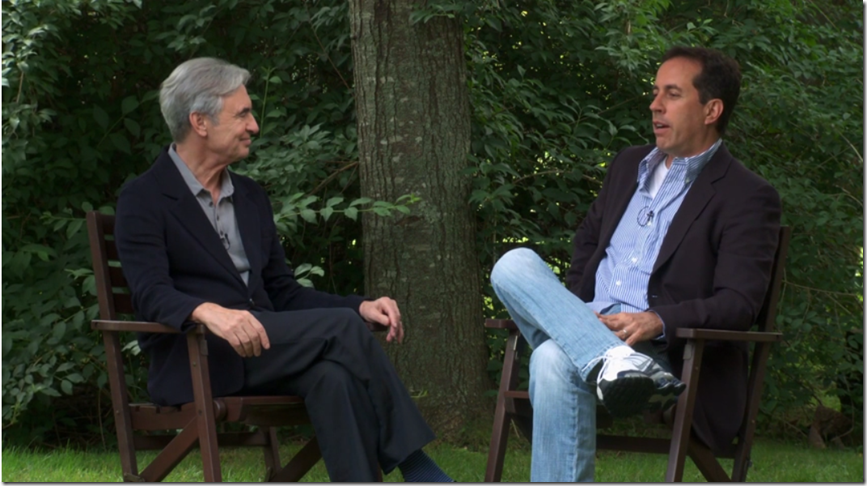The Must-Have Ingredient For Making Risky Material Work
A client of ours came to us a while back with an unusual idea for his upcoming keynote speech, which he was set to deliver to several thousand people.
In the middle of his talk, he wanted to show the audience a four-minute music video that he loved. The video was on message and delivered his point in an interesting way — but I was concerned that the clip was way too long and would diminish the energy in the room.
I was also mindful of an old rule of thumb that suggests the length of the setup has to be commensurate with the power of the punch line. In other words, the longer the lead-in, the better the punch line has to be. I knew his punch line would be good — but was it that good?
For those reasons, I suggested that he consider showing an edited version of the clip instead. The audience would get the point, I argued, and doing so would mitigate the risks of going too long.
My client respectfully declined my advice. And in watching his demeanor when he did so, I immediately gained confidence that he would take his unconventional idea—one that went against many of the “rules” of public speaking—and make it work.
What I saw in that moment boils down to one word: commitment.
If he had expressed even the slightest nervousness or insecurity about his idea, I would have encouraged him once again to abandon it. Such insecurity about risky material usually leaks out to the audience — often in a subtle but still detectable way — and, at best, undercuts the power of the moment. (At worst, it risks a backfire from which recovery is nearly impossible.) But when delivered with true belief in the material and in full sincerity, audiences are often willing to go along for the ride.
That’s exactly what happened in this case. Not only did his idea work, but audience members continued to buzz about it for months. It worked, in part, because it was unpredictable. Had he gone the safer route of a short video clip just so audience members could “get the idea,” it wouldn’t have worked nearly as well.
Commitment alone isn’t a guarantee of success, of course. The underlying idea must be sound, on message, and well executed. But it is a prerequisite.
Jerry Seinfeld’s Lack of Commitment
During an interview on David Steinberg’s program Inside Comedy, Jerry Seinfeld served up a great anecdote about the audience sniffing out his lack of commitment to a joke he didn’t particularly like.
“I was doing a joke the other night, and as I was coming up to the joke—this is a joke that always works — and I was coming up to it, I go, ‘ya know, I don’t even really like this joke. I don’t know why I do it, I don’t think it’s very clever. It always gets a laugh and I know it’s going to get a laugh tonight.’ And I’m just about to say it, this is what I’m thinking. But I’m such a pro and I know this bit so well, and I’m in middle of my act, everything’s flowing, there’s not going to be a problem here. But in the back of my mind, I’m just ruminating…I’m thinking this joke is not a very good joke, and you know, whatever, I’m not going to take it out if it works. And it connects to the next joke. So I come up to the joke and I do the joke — and nothing. And I know that I do it the same way I always do it. But something — a light, a flicker, an eyelash — they knew it.”
Those examples both make the same point, in opposite ways. If you’re contemplating using a risky device or risky material, there are only two options: commit fully or take it out. There are no in-betweens.





I have to give you credit for not closing with the famous Yoda quote.
Here’s one of my favorite anecdotes to support your thoughts on commitment and conviction. It’s Gene Wilder talking about making Young Frankenstein. Mel tells the story differently, but Gene’s version perfectly matches your post:
GROSS: Were there times when you had to stand up to them and to do something your own way… When they didn’t want you to?
WILDER: With Mel, only one time and that was later on during “Young Frankenstein” – never with Zero and never with Mel except I was writing every day, and then Mel would come to the house and read what I’d written. And then he’d say, yeah, yeah, yeah, OK, yeah, OK. But we need a villain or we need whatever it was. And we’d talk a little bit and then he’d go away, and I would write all the next day. And he’d come and look at it. And then one day when he read the pages I had written about Dr. Frankenstein and the creature sing and dance to “Puttin’ On The Ritz.” He said, are you crazy? This is frivolous. You’re just being frivolous. Well, my temperature rose, and after 20 minutes or so of arguing, my color went from red to, I think, blue or purple. I was – started screaming and then all of a sudden, he said, OK, it’s in. And I said, well, why did you put me through this? And he said, I wasn’t sure if it was right. And I thought if you didn’t argue for it, then it was wrong. And if you did, it was right. So you convinced me.
https://www.npr.org/templates/transcript/transcript.php?storyId=491944275
Ken –
What a wonderful anecdote! I only wish I had thought to include it in the original piece — but am delighted you added it to the comments section.
Happy New Year.
Brad